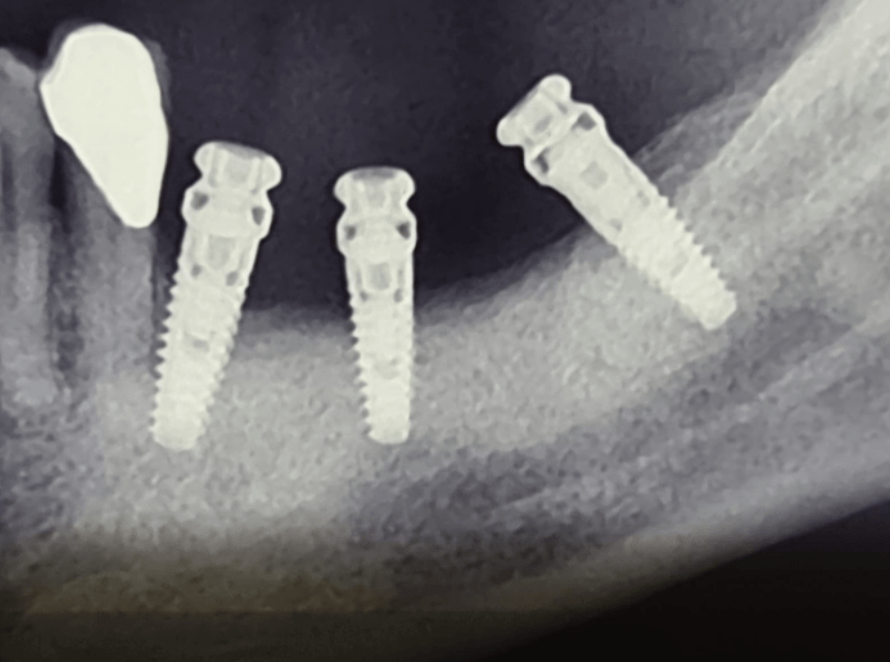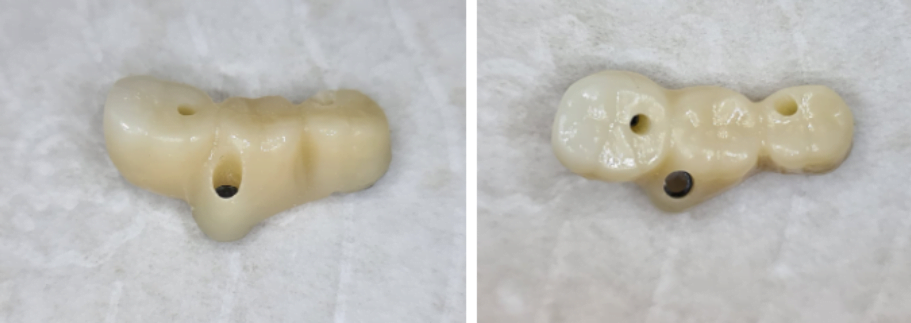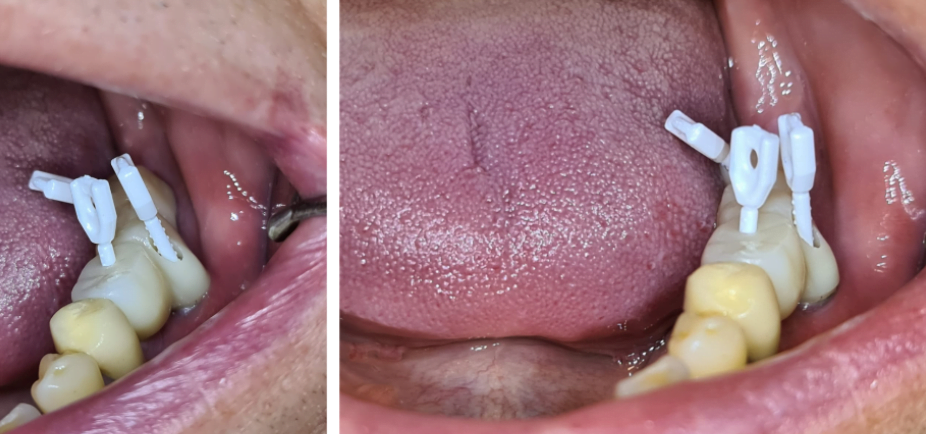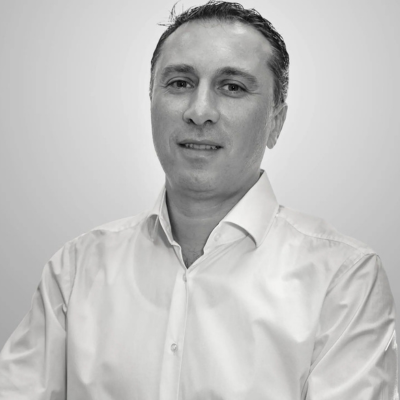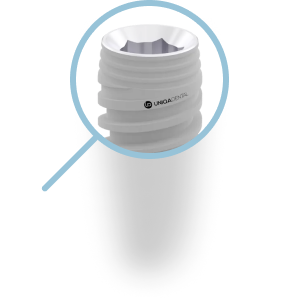Getting the best out of a poorly placed dental implant using a screw retained restoration
Hello everyone, and welcome to Uniqa Dental Show, where we discuss interesting cases and new procedures in the field of dentistry. Do not forget to make likes, share, subscribe and send us our cases so that we will consider them. Today, Dr. Yaniv.
What does today’s patient’s problem look like
Today, I brought a case that we saw in the laboratory. It’s a case from a different doctor. We had three implants placed with the impression taken and the impression was sent to us. In here, you can see three implants.
In the lower jaw posterior area. In here, you can see that the implants looked practically parallel and placed not bad. I don’t think that they’re new because you can see that this is a little bit of bone absorption. I don’t think that the implants were placed this way. But when you look in the mouth, when you look in the scan of the impression itself, you see a very big problem because first of all, yeah, one of the implants is so buccally inclined. This angle is almost 90 degrees.
It’s a very big problem for every type of restoration that is possible to make. Because if you want to make cemented restoration, you don’t have here space at all. And the only option is to just leave this implant alone, and then don’t restore on this implant. You will restore the dentition on these two and will not use the third.
And if you want to have cemented restoration, it’s a problem because you want the smallest possible abutment. You want the smallest possible height of the abutment, and for the cementation, that’s a problem. The higher the height of the abutment, the bigger the buccal bulge will be. So, if you’ll use regular abutment, your bridge will be so deformed. It will be so uncomfortable that there is no use at all in using this. In this case, this implant was used with the smallest multi-unit possible, with the smallest sleeve possible. And those two implants were with regular multi-units and regular sleeves. Now not only that, you can see that these two screw channels are very small and this screw channel is a little bit bigger.
This is because in here you can see one-and-a-half-millimeter sleeve. When using one-and-a-half-millimeter sleeve, the screw is in the bridge itself. It’s not in the sleeve. It’s in the material of the bridge. So, you can’t have a floating screw in the bridge. You need to take the screw from outside, put in and you need to close in here the screw. You can see that you don’t even have place for the cap for the screw.
The bridge can only hold these two implants. But the integrity, the chances for it to unscrew, for the screw loosening are much smaller if you use three implants because you have three implants that each go to another direction and the integrity is much better. So, in this case, we did want to use this implant. And the only option that was possible is to use the smallest multi-unit with the smallest sleeve. The screw will be in the bridge itself. There is also almost no place to close with the cap, this screw. What will hold the screw cap is the composite material that will go into the hex and into the screw. If you want to take out this screw, you probably would need to destroy the screw. You don’t have place at all. You can see this is the screw. You don’t have any walls to hold the cap.
You can see here, these two are placed very buccally. These are placed quite normal. And in here you have also crazy angulation. And everything in here was made on straight multi-units.
The question may arise – why not use angular multi-units.
Because it’s possible. When you can make on straight multi-units and you don’t need to use angulated ones, it’s much simpler to make the work. Angulated multi-units, if you want it to use in this area, angulated multi-units, you don’t have the option to use this. And in here you can see the provisional bridge, the temporary one, not the permanent one as we saw previously.
If you want to use angulated multi-units, the angulated multi-units are bigger itself. You can’t have zero with angulated multi-units. It’s impossible.
There is not enough material as it is. You want to make the bridge as strong as possible. So, in here, we have this buccally-inclined implant with the smallest multi-unit, with the smallest cap. Maybe in a different case we wouldn’t use this implant at all. And we have this implant that is normal. And we have this implant that is very extremely angulated. We could have used a straight one, but it’s not revealed.
You can see that the buccal bulge is not that big. There is a problem. You’ll have a problem with food residues that goes under these bulges. You have many different problems. But the question here is if you want to restore this implant or not. If you want to restore, you have a solution. You have a way to restore it. Maybe it’s not the ideal way, but you can’t make the ideal way of restoration on not ideally placed implants. So, you can see here that implants that were very poorly placed, still can be restored quite good with a decent restoration, with a screw-retained restoration. And it’s not that difficult. Everything here was very easy.
Before we saw the permanent bridge from zirconia. The only difference is a little bit of colors, but there is no difference at all in the permanent and temporary bridge. And the whole caps will be closed. And that’s all. We’ve finished everything with this small bridge with these problematic implants. The distal implants with cemented restoration, for example, I’m not sure if it’s even possible to restore.
There is not enough height and too much angle of inclination so that it is impossible to restore on cement fixation.
It’s maybe a case that will be very problematic for cemented restoration, and for screw-retained restoration it’s also problematic because the implants are not positioned good. And still, you can see that we did have a good result. A fine result that will work.
Thank you for being here today. And thank you for being here today. Don’t forget to like, share, subscribe, follow us, and send us your interesting cases for us to review.

